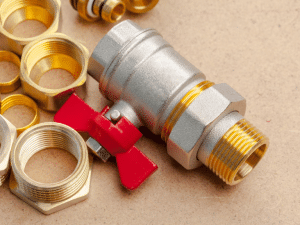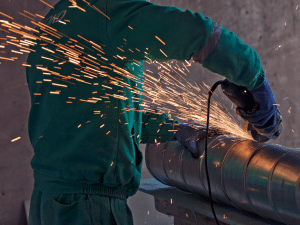Maintenance Tips Recommended by Leading Brass Ball Valve Manufacturers
Maintaining the reliability of your fluid systems starts with the small things, like your valves. Leading ball valve manufacturers will tell you that even a tough, long-lasting brass ball valve needs regular upkeep to keep things running smoothly. The good news? It doesn’t take much. A few simple habits and some know-how from your trusted brass ball valve manufacturer can keep your systems safe, efficient, and leak-free for years.
Understanding Brass Ball Valves
Brass ball valves are used everywhere for a great reason. They are durable, easy to actuate, and versatile for use in water lines, gas lines, HVAC systems, and industrial machinery. The ball rotates inside the valve body to control the flow of fluid and provide quick shut-off or flow-through control.
Because they are resistant to corrosion and wear, manufacturers suggest brass ball valves for commercial and residential applications. They are small and reliable, and can handle the team pressure of real-world applications, but only if you care for them properly.
Routine Inspection Checklist by Ball Valve Manufacturers
A timely inspection can catch minor issues before they become major ones. You don’t have to be an engineer to see the basics. Simply develop the habit of looking for the following:
- Visible leaks or moisture around the valve’s joint or body
- Rust, discoloration, or buildup on the surface
- Stiff or difficult handle movement
- Cracks in the housing or around seals
Most ball valve manufacturers recommend doing this every couple of months. A 5-minute check can prevent costly shutdowns later.
Cleaning Procedures That Actually Work
Cleaning a brass ball valve is simple. First things first, turn the system off and remove the valve, if you prefer. Use warm water and a gentle soap with a soft brush to remove the dirt and grime from the valve. If there are mineral deposits, a vinegar solution can work wonders; just remember to rinse off well when you are done.
Never use steel brushes or any harsh chemicals; these will scratch the surface or cause wear and tear to the inside components. Finally, let everything dry completely before reinstalling.
Lubrication Tips from Brass Ball Valve Manufacturers
Proper lubrication is important for smooth turning action while preventing damage from friction. Silicone-based lubricant or compatible with PTFE will work. Choose something compatible with brass but that will not cause damage to the seals.
Use a small amount on the stem and the ball during routine servicing. Do not use excess liquid, and avoid petroleum-based products. Brass ball valve manufacturers will clearly inform you that using the wrong lubricant will not only lessen the longevity of the seals, but it may create more problems than it solves!
A Practical Maintenance Schedule You Can Stick To
To keep your valve operating well, you don’t need a complex checklist. What follows is a simple maintenance schedule that most ball valve manufacturers endorse:
- Monthly: Quick inspection: Any signs of moisture/rust/a stiff handle?
- Every 3–6 months: Is the valve opening & closing easily? Fully open the valve and close it a few times, ensuring it moves smoothly.
- Twice a year, clean and lubricate if needed. (inside and out)
- Once a year, replace any gaskets or seals that have deteriorated to prevent leaking.
The key is consistency. Taking small steps will prevent big problems later.
Avoid These Common Valve Mistakes
You’d be surprised how often good valves go bad because of small, preventable errors. Some of the most common mistakes ball valve manufacturers hear about include:
- Over-tightening during installation—this can crack the body or damage the threads
- Using it with the wrong type of fluid, especially harsh chemicals not meant for brass
- Skipping lubrication, which leads to stiff operation or internal wear
- Forcing a stuck valve handle—this often damages the stem
- Ignoring slow drips or minor leaks, thinking they’re harmless
Taking care to avoid these common pitfalls helps extend your valve’s life by years.
When Should You Replace a Brass Ball Valve?
Not every valve can be saved. Sometimes replacement is the smarter—and safer—option. Here are the signs it might be time:
- You notice constant leaks even after replacing the seals
- The handle is loose or unresponsive
- There’s visible corrosion inside or on the ball itself
- The valve is stiff or won’t fully open or close
- The body has cracks or deformations
According to top ball valve manufacturers, a good brass ball valve should last 5 to 10 years, depending on use. But when these signs appear, don’t wait.
Helpful Tips from Leading Ball Valve Manufacturers
Over the years, manufacturers have picked up some tried-and-true advice. If you want your valve to go the distance, keep these in mind:
- Match the valve to your system’s pressure and temperature—don’t guess
- Flush new systems before installing the valve to avoid trapping debris inside
- Store spare valves in a dry place away from humidity
- Check the flow direction marking—installing it backward is a common mistake
- Inspect valves that get heavy use more often than those in standby systems
Little habits like these make a huge difference over time—and they’re straight from the experts who build these valves every day.
Conclusion
Even though brass ball valves are strong and long-lasting, they still need regular care. Simple steps like checking, cleaning, and oiling them can help them work well for many years. Don’t wait for something to go wrong before you take care of it. Trusted ball valve makers always say that regular inspection of your valve is a smart move. Following advice from a good manufacturer can help you avoid wasting time, money, and effort later.
FAQs
How often should I service my brass ball valve?
Every 3–6 months is a good rule of thumb. Valves in high-use or high-pressure systems may need more frequent checks.
What cleaning solutions are safe to use?
Mild dish soap, warm water, or a vinegar-water mix is ideal. Avoid anything acidic, abrasive, or solvent-based.
Can I repair a leaking brass ball valve myself?
Yes, if the issue is a worn seal or a loose fitting. But for deeper damage or corrosion, it’s safer to replace it.
How do I know if my valve needs full replacement?
Replace it if it’s stiff, leaking constantly, or visibly corroded inside; it’s time to replace it.
Are brass ball valves suitable for all fluid types?
They work well with water, air, and oil. For aggressive chemicals, check with the brass ball valve manufacturer first.







